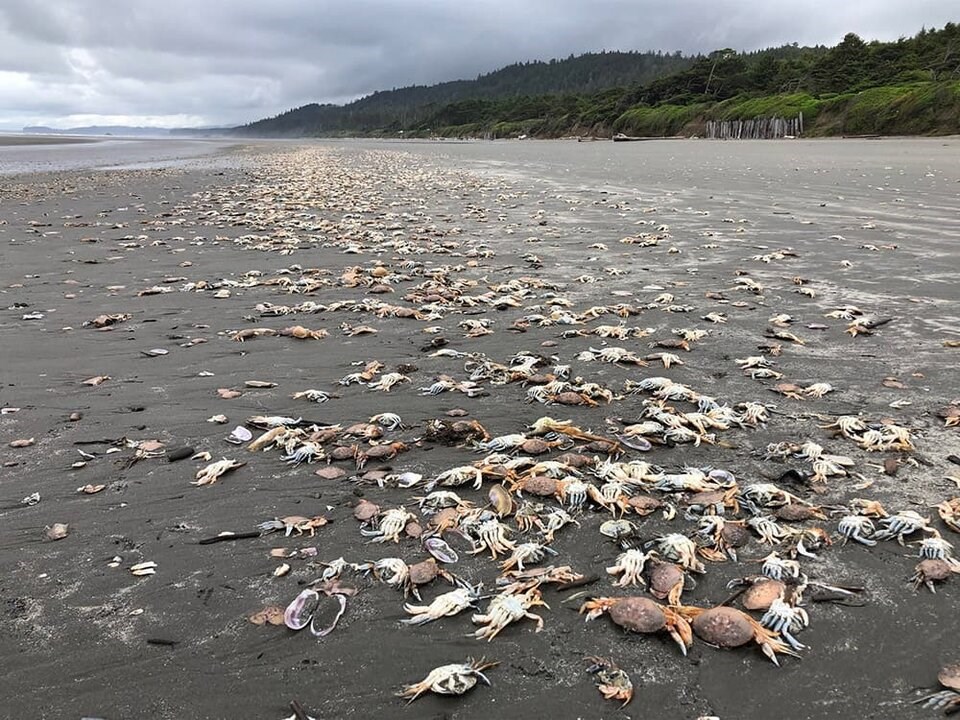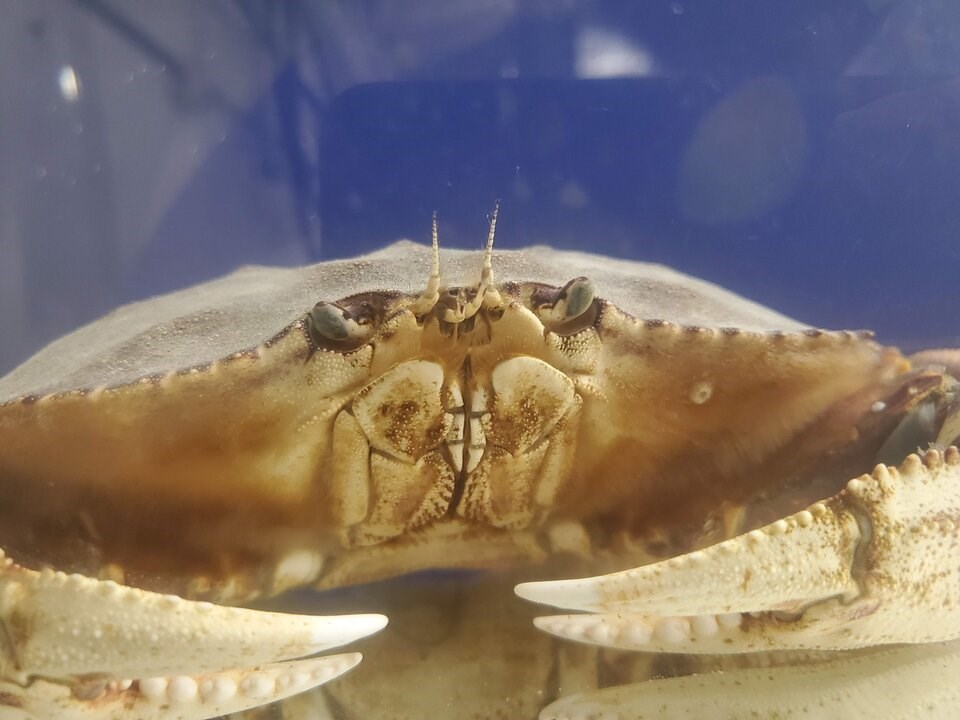Scratching its way across the seafloor, a crab flicks its tiny antennae in an ancient adaptation that allows it to smell their way to the carcass of a dead fish, its mate or something lurching around a rock waiting to eat it.
For the Dungeness crab, to sniff is to survive. But according to a new study from a group of Canadian researchers, the crustacean’s olfactory abilities appear to be waning. The research, published in the journal Global Change Biology, found that by 2100, the crabs would need to get up to 40 per cent closer to their food before they could smell it.
The culprit, said lead author Andrea Durant of the University of Toronto, ocean acidification brought on by humans pumping carbon dioxide into the atmosphere for the past 150 years.
Wired to their nervous system, a crab’s “nose cells” are directly exposed to ocean water. Durant said she expected the crustaceans to handle the acidic conditions a lot better.
“This is really how they communicate. This is how they feed. This is how they mate and reproduce,” said Durant. “We thought they were just going to be really robust.”
Why are oceans so acidic?
Much of the carbon dioxide humans have sent into the atmosphere — largely produced by burning fossil fuels — has been absorbed by the ocean.
Over the past 250 years, that has led to a 30 per cent spike in ocean acidity, threatening the survival of entire marine ecosystems that require the right pH balance.
To understand acidity you need to grasp the pH scale. Ranging from zero to 14, anything under seven is acidic. Go over seven, and a substance is considered basic.
Today, ocean water has already crept toward the acidic end, dropping to 8.1 from 8.4 since the start of the Industrial Revolution. Under the worst-case climate change scenario, the acidity of sea water could double by 2100 — the equivalent pH gap between a cauliflower and a grapefruit.
“If you equate that to changes in the pH of human blood, for example, you're talking about catastrophic changes to organ function and death,” Durant said.
35 B.C. crabs time-warped in Toronto tank
To understand how those changing conditions would affect Dungeness crabs, Durant and her colleagues went to a local grocery store supplier and bought 35 live crabs directly flown in from British Columbia.
In one tank at the university, Durant dropped half the crabs into water conditions seen in the ocean today. In another, she cranked up the acidity of the salt water to mimic what an ocean would look like by the end of the century. Then they dropped the carcasses of fish into the tank.
This B.C. crab and 34 of his Dungeness friends took part in a smelling experiment.
— Stefan Labbé (@StefanLabbe) May 18, 2023
By 2100, researchers found ocean acidification brought on by climate change could reduce their sniffing abilities by up to 40%... pic.twitter.com/Q2EiSVU1Bb
In the acidified seawater, Durant said she had to add 10 times the amount of food before the crabs increased their “sniffing" response. Overall, the acidic water appeared to reduce their ability to smell by between 30 and 40 per cent.
The acidic water was also found to impact the crab’s ability to smell a mate's pheromones and the urine of fellow crabs — an important signalling mechanism used when predators are near.
Crabs caught between a rock and a hard place
If the Dungeness were to decline, the economic and culinary implications could be huge. Ranging as far south as California, Dungeness crab are one of the most popular crab to eat in North America, and the most important crab species harvested in British Columbia and Alaska.
“It's one of the largest fisheries in the Pacific Northwest, and especially B.C.,” Durant said. “[It] would be a huge impact to fisheries if we were to lose this population.”
In recent years, the crustaceans have faced a number of pressures, including harmful algal blooms, marine heat waves, and a lack of oxygen near the sea floor causing them to suffocate.
Durant says all of those pressures — including losing their sense of smell — could be affecting other anthropoids, including other crab species, shrimp and lobster around the world.

Crustaceans are far from the only sea creature to suffer under the fallout of acidifying oceans. When carbon dioxide mixes with sea water, the gas transforms into carbonic acid. The more acidic the ocean, the less calcium carbonite it can hold — a key ingredient sea creatures use to grow shells and coral species use to expand their life-supporting reefs.
Moving up the food chain, Durant’s colleague had previously seen ocean acidification drop European sea bass's ability to smell by 42 per cent. The fear, she said, is that the rising pH level could affect species along the entire oceanic web of life.
“This is a sense that is vital to marine animals,” Durant said. “Really, the question is whether they can adapt.”



